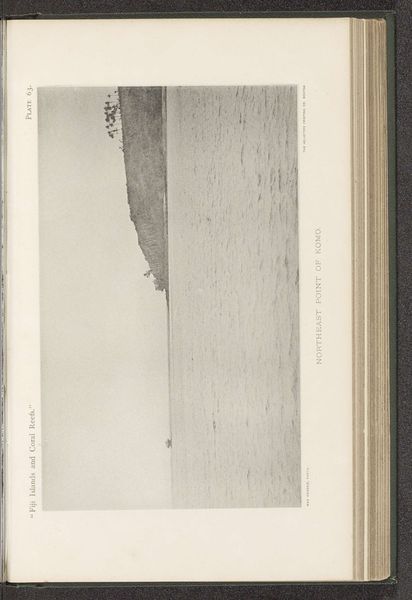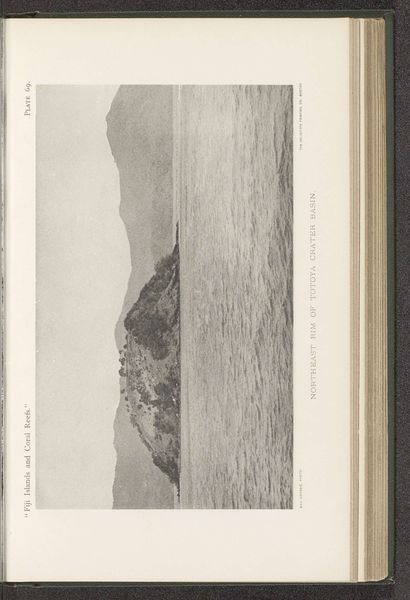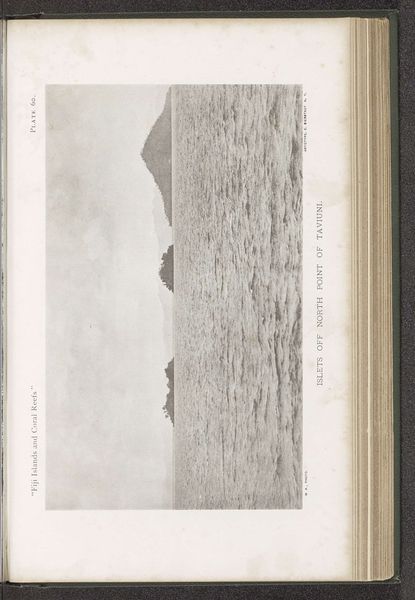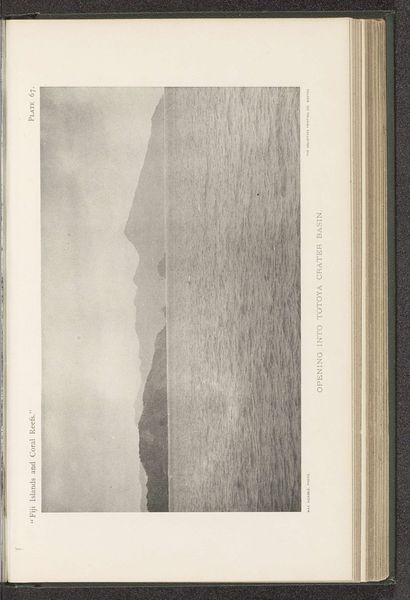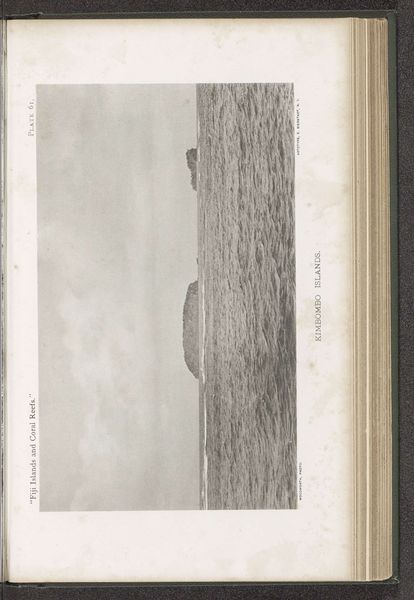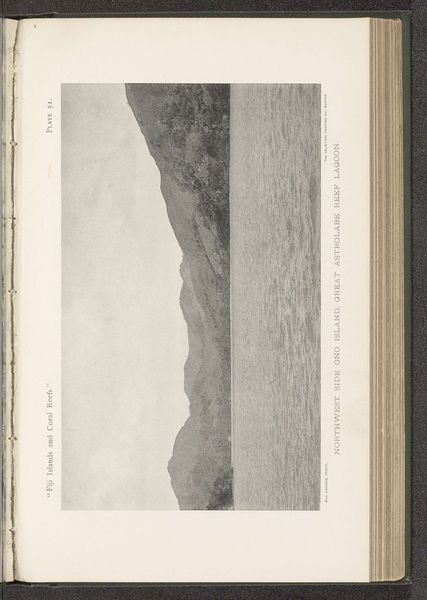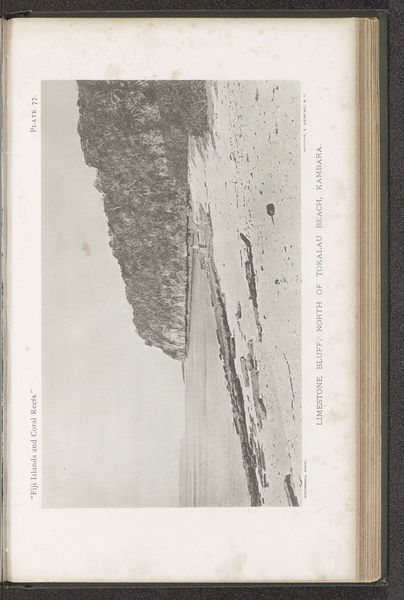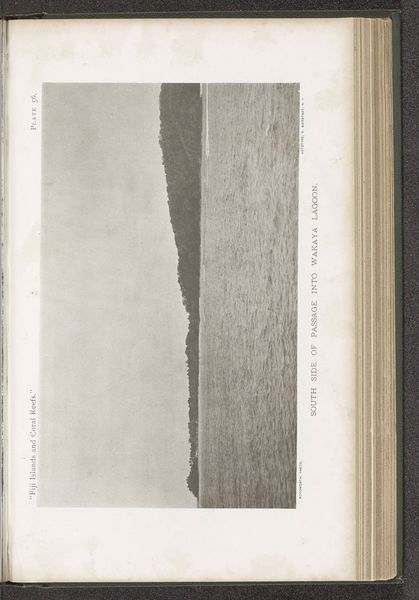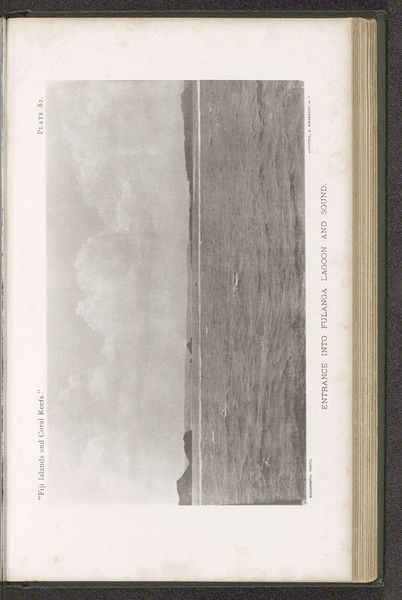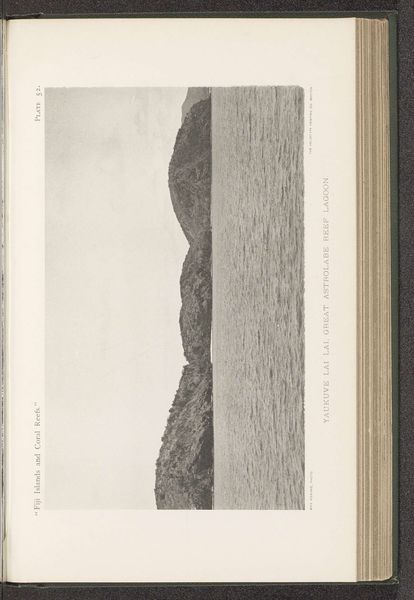
print, photography
# print
#
landscape
#
photography
#
ocean
Dimensions: height 108 mm, width 179 mm
Copyright: Rijks Museum: Open Domain
Curator: This print, "Gezicht op de lagune bij Fulaga," or "View of the Lagoon at Fulaga" in English, captures a serene scene of the Fiji Islands, dating back to before 1899 and created by Maximilian Agassiz. It presents a unique photographic view of a landscape that was then at the intersection of burgeoning colonial influence and existing traditional island culture. Editor: It strikes me immediately as an image of quiet solitude. The horizon line is perfectly centered, dividing sky and water almost symmetrically. There’s a real stillness here, despite what must have been the presence of colonial exploitation looming over the landscape. The island’s silhouette hints at layers of identity, oppression, and resilience that shape lived experiences of those who call Fulaga home. Curator: Absolutely, it is about power dynamics as much as it is a physical location. The lens, used to exoticize lands far from the viewer, places the island, and thus the people, within the conceptual framework of an imagined territory to be conquered and acquired. A history that resonates to this day in many aspects of global post-colonial societies. Editor: How fascinating. Thinking about this imagery existing before 1899—what socio-political events were affecting Fiji around that period? It feels urgent to remember that such scenic and alluring captures come at a price; the photographic rendering itself acts as an instrument. What was Agassiz's goal when capturing the sound? Curator: This was the end of the Fijian chiefdoms, still decades away from complete autonomy after colonization by Britain. It comes at the crest of an imperial moment. The piece serves less as an exercise in creative intent and more as a mode of documentary observation to classify the territory by western understanding of geographical phenomena. A kind of pictorial evidence being used for social study in imperial settings. Editor: The choice to capture Fulaga through photography, rather than, say, a painting, also brings up questions around authority. Photographs are often viewed as objective truth. How complicit do you feel artists who claim objectivity in art are in imperial ventures? The fact that these islanders do not control how this imagery is produced, reproduced and distributed reflects their limited societal agency and access to larger platforms of control. Curator: Indeed, thinking about art as implicated in, not separate from, the dynamics of power and social engineering. Thanks, that has illuminated new angles to my interpretation! Editor: And yours as well. A collaborative view enhances the overall story!
Comments
No comments
Be the first to comment and join the conversation on the ultimate creative platform.
